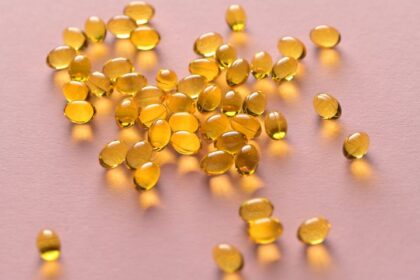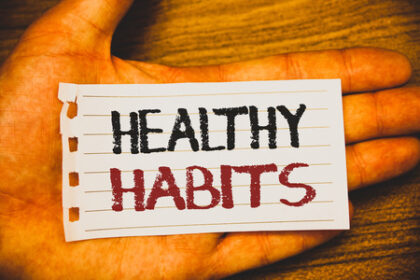Written By: Selia Cox, APRN, FNP-BC
Did you know our skin is our largest organ? It is called the integumentary system and has a lot of important functions. Some functions include acting as a physical barrier protecting against external harmful microbial, supporting temperature regulation, cell fluid balance to maintain hydration, synthesis of vitamin d to help support our bones and immune system and to be able to help us detect sensation such as if we get burned (Kim & Dao, 2022).
As we enter the summer months you may find yourself outside more at the beach, lake or planting your favorite flowers in the garden. Whether we are outside in the summer or all year round even in the cool and cloudy days, it is important to consider the health of our skin.
Skin cancers are the most frequently diagnosed cancer not only in the U.S. but worldwide with ultraviolet (UV) light exposure being a prevalent cause. About 90 percent of nonmelanoma skin cancers are associated with exposure to ultraviolet (UV) radiation from the sun (Skin Cancer Foundation, 2022). In the U.S. approximately, 9500 people in the U.S. are diagnosed each day (SCF, 2022). Risk factors can include unprotected exposure to UVA and UVB rays that can result in sunburns, indoor tanning, lighter skin, eyes, hair, or skin that burns, freckles, or reddens easily, family, or personal history, and large number of moles that can vary in types (CDC, 2022).
Ways that we can help reduce our risk is focusing on modifiable risk factors that we have control over to implement that does not only include sunscreen. The National Health and Nutrition Examination Survey (NHANES) had suggested that the use of protective clothing along with shade reduced the probability of burns more so that that seen in sunscreen (Linos, 2011). Ways to help protect ourselves while we are enjoying and obtaining the benefits that the sun, and fresh air provides with the following strategies:
– Reducing time when UV rays are the strongest which is between 10am-4pm
– Utilize shade
– Wearing a hat that helps to cover, scalp, neck, ears, nose
– Protecting your eyes with sunglasses that covers for both UVA and UVB protection
– Bring extra clothes with you to cover arms and legs to cover up especially, when you may start to notice burning
Sunscreen
Before heading outside, you may have also been strolling through the store looking for the right sunblock for you and your family and confused about what will offer the best protection. Sun protection factor (SPF) is a level that reflects how much UV to hit the skin. For example, SPF 30 would take 30 times longer than if you were not wearing anything and allows about 2% of rays through. SPF is tested to measure how well to protect from UVB rays and not UVA.
Sunscreen guidance slowly continues to evolve in the last decade to not only involve the sun protection factor but to shed further light (pun intended) on the importance of broad-spectrum coverage that includes protection from both UVA and UVB rays and not just UVB. UVA can penetrate the skin deeper to the second layer that is called epidermis that has been associated with skin aging and cancer while UVB penetrates the top, first layer of the skin that has been seen to be a major contributor to non-melanoma skin cancers (EWG, 2022). Studies have shown that SPF 15 has reduced individuals’ risk of developing squamous cell carcinoma by 40% and lowering melanoma risk by 50% (SCF, 2021).
Strategies for selecting and using sunscreen
– Choosing a broad-spectrum sunscreen that protects from both UVA and UVB rays.
– Apply 30 minutes before going outside, reapply every two hours and after swimming and sweating. No sunscreen is waterproof. Higher SPF rating does not mean longer protection and having to reapply less.
– SPF15 has been recommended by the Skin Cancer Foundation for occasional exposure which entails driving to work and the use of SPF 30 or higher for extended outdoor activities.
– American Academy of Dermatology recommends 30+, broad spectrum and higher water resistance.
– Higher SPF can provide a false sense of security, regardless of the SPF amount, it is important to utilize other measures previously reviewed.
– Infants 6 months and younger recommendation is to avoid direct sun, and use of protective clothing.
– Check the expiration date of your sunscreen each year and use up to date products.
Sunscreen ingredients
Sunscreen and its ingredients continue to be an area highly researched. The FDA (2020) completed a study that looked at absorption of various sunscreen active ingredients oxybenzone, octocrylene, homosalate, octisalate, octinoxate, avobenzone. The study showed that with all 6 active ingredients tested as a lotion, spray, pump spray, nonaerosol spray were systemically absorbed and had blood levels that surpassed the FDA threshold for potentially waiving some additional safety studies (Matta, 2020). FDA reports (2021) reveal that there is some evidence that several active ingredients may be absorbed through the skin and enter the body. Further research is necessary but this would not indicate that individuals should refrain from use. Based on research conducted by the Environmental Working Group (EWG), out of all the active ingredients for sunscreen approved by FDA, oxybenzone is an active ingredient that they report as being most worrisome given its ability to be readily absorbed through the skin and to be a hormone disrupter (EWG, 2022). The FDA has recognized that titanium dioxide and zinc oxide are safe. The EWG recognizes that mineral sunscreens such as titanium dioxide and zinc oxide have fewer side effects, does not break down as easily, less absorption and provide strong sun protection with UVA and UVB when applied with a lotion to reduce inhalation of the nanoparticles from aerosol (EWG, 2022). Environmental working group is a research-based organization that provides a helpful guide that rates sunscreens based on UVA/UVB balance and health concern based on active ingredients and amounts, and stability of the ingredients. Below are applications from EWG that you can utilize to help guide you to choose a safer sunscreen.
What about vitamin d?
You might be asking yourself that how will I obtain vitamin d from the sun with all this talk about sun protection? I had mentioned the skin helps to synthesize vitamin d and while it is important for us to implement the measures mentioned thus far, this can result in a decrease intake of vitamin d from the sun. Vitamin d deficiency impacts just about 50% of the population worldwide that has been attributed to lifestyle and environmental factors that reduce exposure from the sun’s UV rays (Nair & Maseeh, 2012). There are other lifestyle factors that could impact reducing time outdoors such as sensitivity to the sun due to medications as seen with antibiotic doxycycline. It is important to work with your provider to not only check your vitamin d baseline level to help determine dosing but to be able to tailor a plan specific to you and medical history.
Lastly, be sure to check your skin regularly for any new growths and or changes with moles. Consult with your provider with any skin changes, to learn more about your risk factors, reviewing vitamin d needs and sources, which products may be best for you and or if you could benefit from seeing a dermatologist.
There is an app for that
EWG Healthy Living App and sunscreen decoder that provides data on safer sunscreens
– https://www.ewg.org/apps/
– https://www.ewg.org/sunscreen-decoder/
References
American Academy of Dermatology. (2022). Sunscreen. Retrieved from https://www.aad.org/media/stats-sunscreen
Centers for Disease Control and Prevention. (2022). Skin cancer: what can I do to reduce my risk of skin cancer. Retrieved from https://www.cdc.gov/cancer/skin/basic_info/prevention.htm
Environmental Working Group. (2022). EWG sunscreen guide. Retrieved from https://www.ewg.org/sunscreen/
Kim, JY. & Dao, H. (2022). Physiology, Integument. Stat Pearls Publishing LLC. https://www.ncbi.nlm.nih.gov/books/NBK554386/#_NBK554386_pubdet_
Linos, Keiser, Tang. (2011). Hat, shade, long sleeves or sunscreen? Rethinking US sun protection messages based of their relative effectiveness. https://www.ncbi.nlm.nih.gov/pmc/articles/PMC3873510/#
Matta MK, Florian J, Zusterzeel R, et al. Effect of Sunscreen Application on Plasma Concentration of Sunscreen Active Ingredients: A Randomized Clinical Trial. JAMA. 2020;323(3):256–267. doi:10.1001/jama.2019.20747
Nair., R, Maseeh, A. (2011). Vitamin d: the “sunshine” vitamin. Retried from https://www.ncbi.nlm.nih.gov/pmc/articles/PMC3356951/#
Skin Cancer Foundation. (2022). Skin cancer prevention. Retrieved from https://www.skincancer.org/skin-cancer-prevention/sun-protection/sunscreen/
Skin Cancer Foundation. (2021). Skin cancer facts & statistics. Retrieved from https://www.skincancer.org/skin-cancer-information/skin-cancer-facts/




